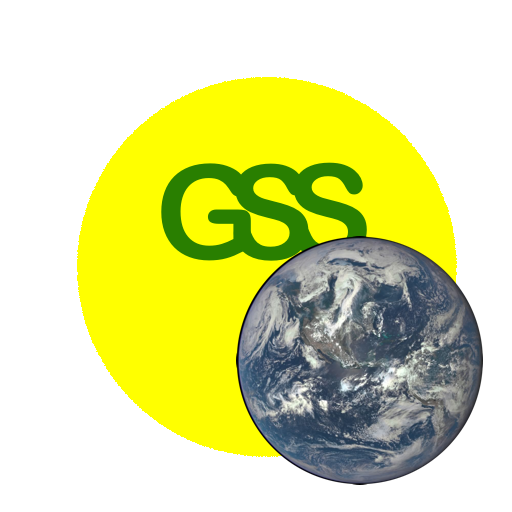The NASA Kepler Mission spacecraft launched March 6, 2009.
It ceased data-collecting operations in August 2018 when it ran out of fuel. In those nine years, Kepler Mission discovered 4,571 planetary signatures using the transit method, detecting minuscule drops in brightness of stars when planets move in front them. Of those planetary signatures, 2,805 have been confirmed as actual exoplanets (as of July 2024).
Along with SETI Institute, The Lawrence Hall of Science was one of two co-lead institutions responsible for Education and Public Outreach for the Kepler Mission. This page has material from the original NASA Kepler Mission Education pages (the now decommissioned kepler.nasa.gov). The archive of the original Kepler Mission Education page is
http://wayback.archive-it.org/8608/20170330180948/https://kepler.nasa.gov/index.cfm.
A summary of that site’s contents is below. See also https://science.nasa.gov/exoplanets/keplerscience/ and an article in Eos (AGU), 1 August 2018, The Kepler Revolution (https://eos.org/features/the-kepler-revolution), by Kimberly M. S. Cartier, that summarizes nine fundamental discoveries about planets aided by Kepler in 9 years of operation.
Meet the Kepler Mission Team
Contents of the Kepler Mission education website
preserved on the Internet Archive (Wayback Machine):
About the Mission
Brief History of Kepler, by Bill Borucki
Discoveries
- Kepler Discoveries (on NASA Exoplanet Archive)
- Old Table
- Planet Candidates
- Follow Up Program
News Items
- The Kepler Team (nearly everyone who ever worked on the Kepler Mission)
- Summary Chart—Overview of Kepler Education and Public Outreach Projects.
- Amateur Astronomy.
- Classroom Activities on Planet Finding.
- Just for Fun — The Arts (music, graphic art, sculpture, literature), Humor, Sagan Celebration, T-shirts, Your Name in Space. Space Tourism Posters (JPL)
- Simulations — Large Museum Exhibit, Dierking Model of Kepler Photometer, Table Top Models (orreries), Paper Model, LightGrapher software
- Computer Interactives
- Citizen Science Project: Planet Hunters
- Planetarium Shows. See also: PASS Strange Planets and Kepler mini-shows (with Strange Planets).
- Presentations (Slides, Video, Audio).
- Kepler Educational Resources: Johannes Kepler, Kepler Mission in Brief, Handouts & Posters, Public Lectures, Solar System Transits, Evaluations, Educator Web Links, Chasing Shadows: Teaching and Learning Resources.
- Sagan Celebration.
- Solar System Transits.
Galleries
- Index.
- Planet Discoveries.
- Artwork: Art of Discovery, Artist’s Concepts, Professional Artists, Diagrams, Hardware, K2 Art, Travel Posters.
- Photos: Images by Kepler, Images of Kepler.
- Videos: Kepler Team, TV Clips, Youtube.
- Animations: Science Concepts, Artist’s Concepts, Types of Worlds, Launch Depictions, Kepler Orrery III.
- Audio: StarDate Radio, Lectures & Interviews, Music, Star Sounds, Jon Jenkins’ Sonifications.
- Interactives: Kepler Exoplanet Transit Hunt, How Kepler Discovers Planets.
- 3D Models.
Chronology of the NASA Kepler and K2Missions
through News Items (Sept 2008 — Sept 2016)
The text below is from an article in Eos/AGU 2018-08-01:
The Kepler Revolution, by Kimberly M. S. Cartier. https://eos.org/features/the-kepler-revolution
Excerpt: The Kepler Space Telescope will soon run out of fuel and end its mission.
Here are nine fundamental discoveries about planets aided by Kepler in the 9 years since its launch.
…Kepler Space Telescope, a small spacecraft that opened a large window to the many thousands of exoplanets strewn throughout the Milky Way …was exhibiting the first signs of low fuel and … would be functional for only a few more months. Its fuel tank hit critically low levels on 2 July, and mission scientists put Kepler into a no-fuel hibernation mode until its latest round of data can be downloaded on 2 August.
…1. Planets Are Everywhere, Equally. …Through its unblinking gaze, Kepler discovered 4,571 planetary signatures, 2,327 of which have been confirmed as actual exoplanets.
…2. The Solar System May Not Be Unique. …With the help of an artificial intelligence algorithm, Kepler discovered another star with the same number of planets as our solar system. The star, Kepler-90, is 2,545 light-years away and slightly hotter than the Sun. Seven of its eight planets were discovered in 2013, and the elusive eighth planet rounded out the set in December 2017. The data show that the orbits of all eight Kepler-90 exoplanets fit within Earth’s orbit around the Sun.
…3. Earth May Not Be Unique. …So far, astronomers have confirmed 29 exoplanets less than twice the diameter of Earth that fall in or near their star’s habitable zone, a region of space surrounding a star that has the right temperature to keep water in a liquid state on the surface of a planet. Seventy more possible Earth cousins remain as candidate exoplanets until astronomers can verify them…. …4. An Earth-Sized Planet May Not Be Earth-Like. …Worlds likely to be covered with molten lava abound in the Kepler data set. …Kepler found plenty of ocean worlds, too. …Kepler-22b, discovered in 2011, was the first example.
…7. Planets Exist in Unlikely Places. …Kepler found that exoplanets can orbit two, three, or even four stars with relative ease.
…8. Planets Follow Defined Trends and Come in Distinct Groups. …planets smaller than Neptune fall into two distinct and separate categories, like two branches of a family tree. The branches were already familiar to astronomers—rocky super-Earths and gaseous mini-Neptunes—but astronomers now know that the categories represent a more fundamental planet property.
…9. Planets and Stars Can Be Oddballs.

